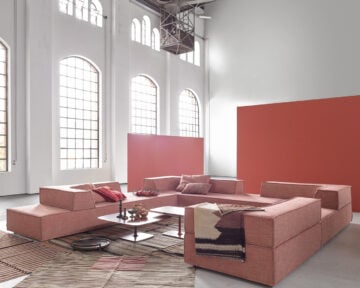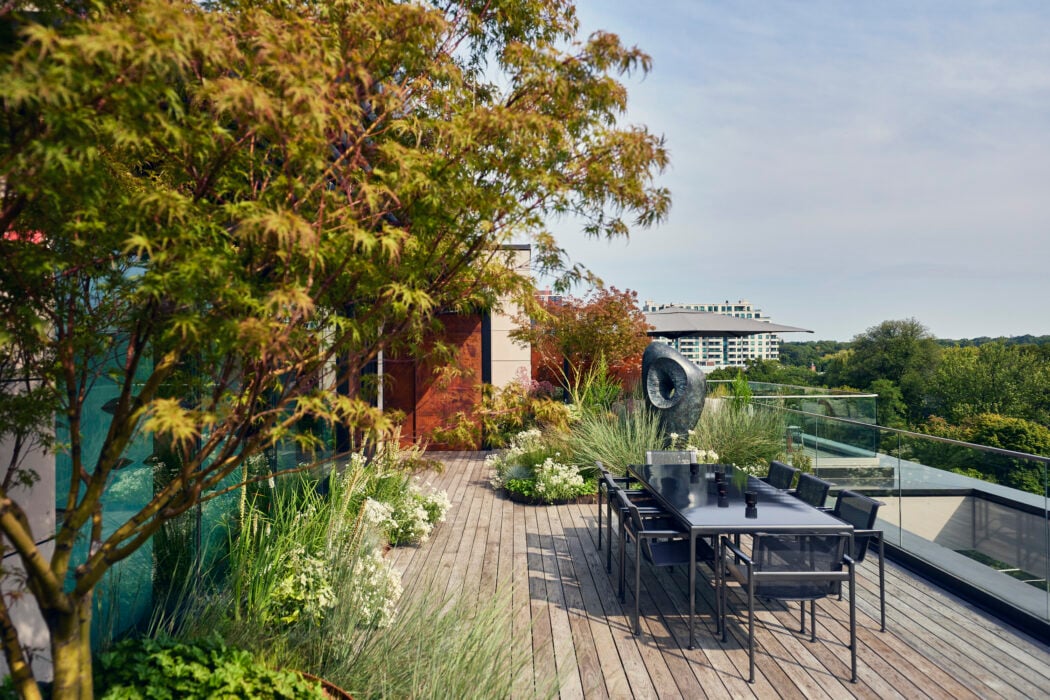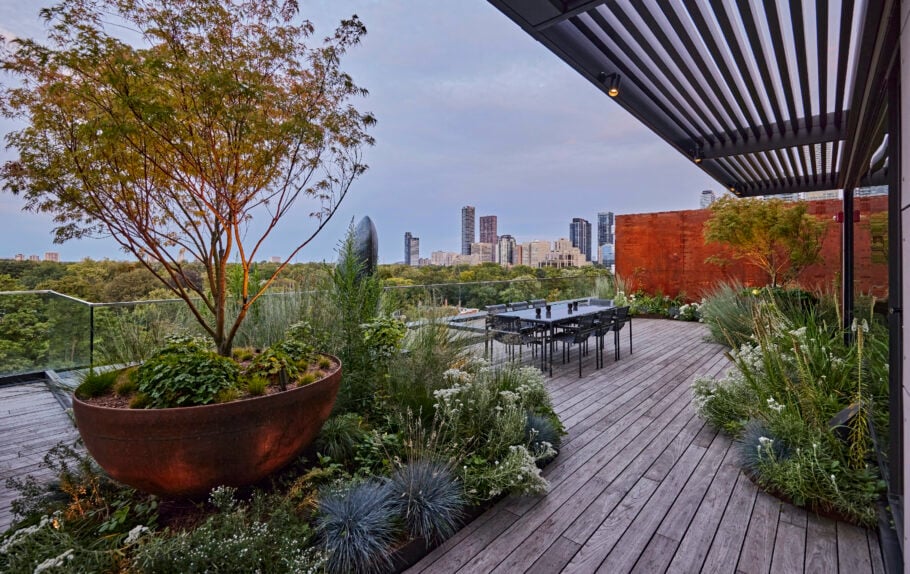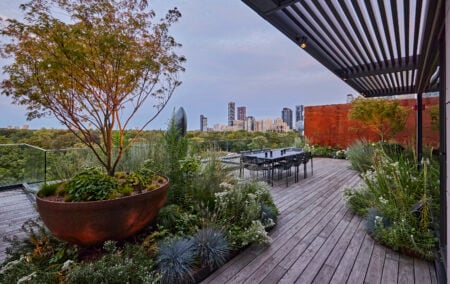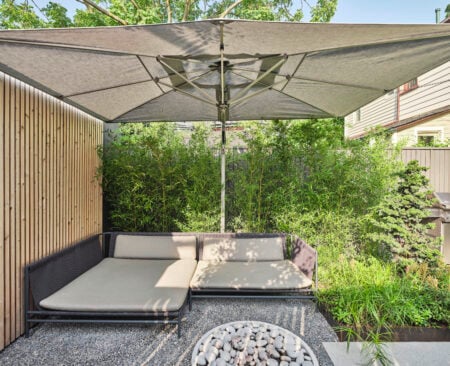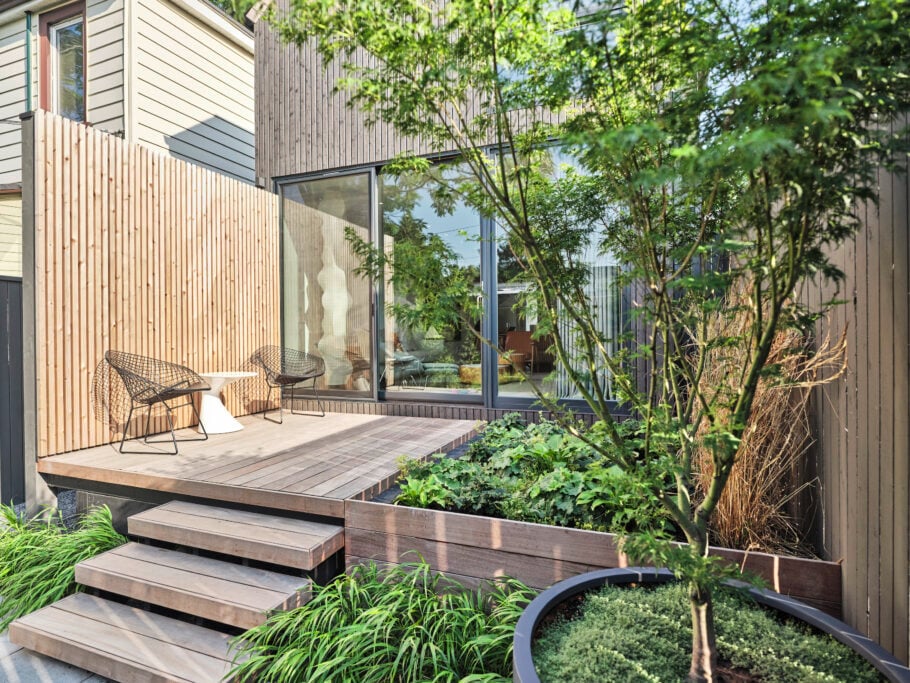Fox Whyte Landscape Architecture Connects Robust Designs With a Delicate Approach


Kate Fox-Whyte talks about the importance of collaboration with tradespeople and the environment.
Landscape architecture combines the technical aspects of architecture with the artistic expression of design, bearing in mind the environment in which its works, lives and breathes. “There is a third dimension to the industry, the interaction with the natural world,” says Kate Fox-Whyte, founder of Fox Whyte Landscape Architecture. “We are designing with materials that are changing with the seasons and depend on their environment to thrive. There is a delicacy.”
Founded in 2005, Fox Whyte Landscape Architecture began as an avenue for collaboration. Fox-Whyte worked as a collaborator and consultant in prominent landscape offices in Toronto but after returning from maternity leave in 2013, decided to branch out to focus solely on her own work.
Since then, the landscape architecture firm has evolved into a technical and creative enterprise, with a primary focus on custom residential gardens.
“The bulk of our work is contemporary in nature, with the goal of creating a custom outdoor space that feels like an extension of its indoor counterpart,” says Fox-Whyte. “Our design decisions are always site-specific and provide a strong connection between the architecture that it’s related to and the site that the gardens inhabit.”
Over the last decade, Fox Whyte Landscape Architecture has defined its practice through planting and plant design, working to make its landscape decisions as contextual and sustainable as possible.
“We opt to use materials that are indigenous to the area we are working in—which means that the landscapes have an honesty to them and that the planting we are doing is more robust and has a better chance of survival, says Fox-Whyte. “We’re planting in a way that is more reflective of how things would grow in nature, looking at plants not as individuals, but as communities.”
As a result of these custom spaces, Fox Whyte Landscape Architecture works closely with its clients and collaborators, whether that be crafts and tradespeople or other firms on site.
“I love detailed design, it provides the landscapes that we are producing with a high-level finish, but those kinds of details don’t happen without having effective collaborations on these projects,” says Fox-Whyte. “We’re fortunate that over the years we’ve developed some fantastic relationships with local tradespeople, whether they’re landscape contractors or specialists. These relationships allow us to create and execute the designs that we’re developing and detailing.”
Operating as a landscape architecture firm in Toronto, Fox Whyte Landscape Architecture has looked up to find new and innovative landscape opportunities. “There is so much space now that is essentially vertical or elevated. Bringing nature to those areas is critical because that’s a huge opportunity for more nature in the city.”
The Sky Garden is a seven-story multi-residential rooftop landscape nestled in downtown Toronto. The space features a green roof curated with a mix of native pollinator plantings. Curvaceous garden beds define social spaces, creating a harmony between natural landscapes in the urban jungle. Commissioned sculptures and metal screens showcase a unique blend of artistic expression and structural engineering.
Whether planting seven-plus stories high or curating public works, Fox-Whyte says the most important part of her career is the people. “I think a part of the reason we have such a diverse profile is because of the opportunities we’ve had to collaborate and build strong connections with people inside and adjacent to our industry.








